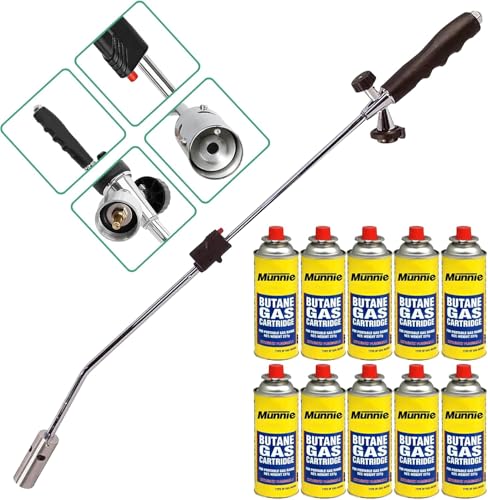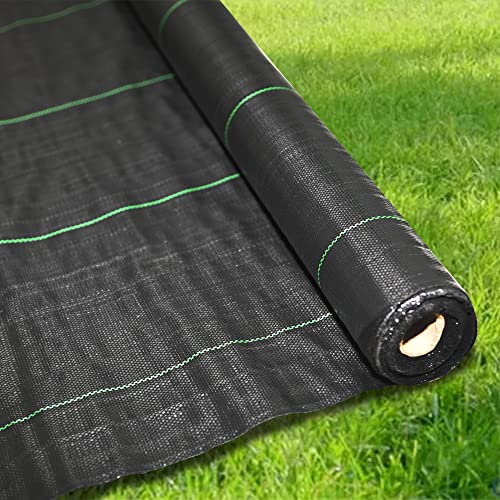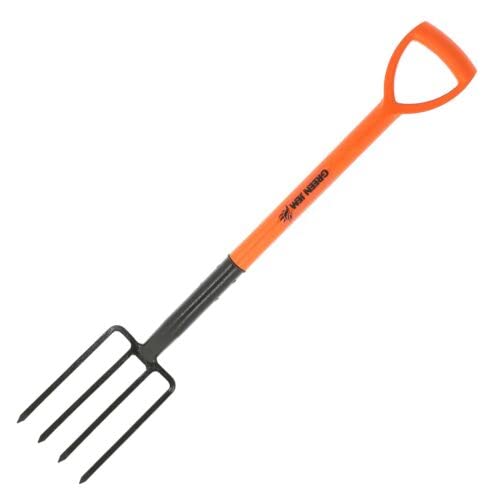How to get rid of horsetail weed - garden experts reveal the best way to tackle this hard to kill weed
Solutions that will help to control and reduce it
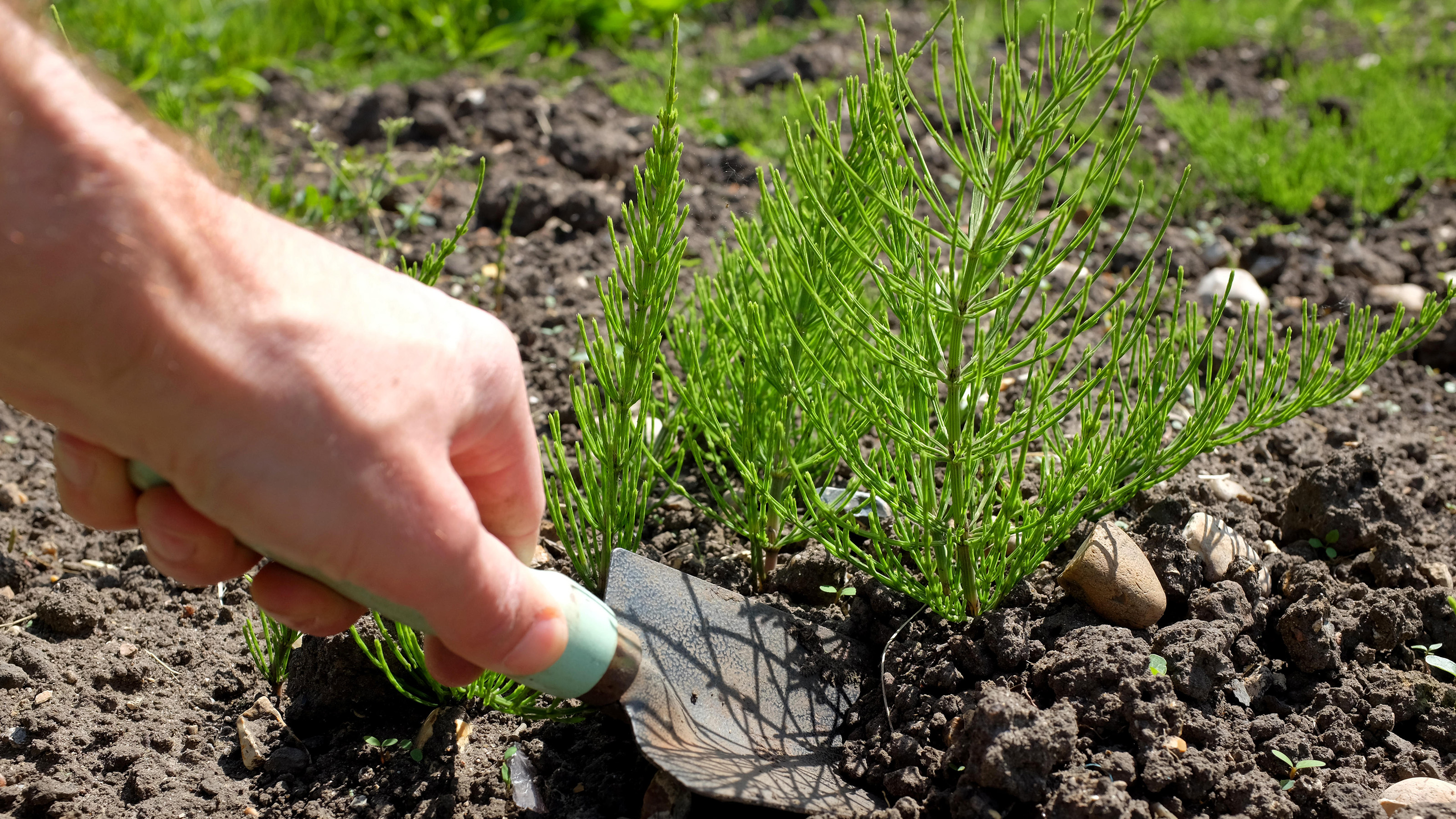

If you're wondering how to get rid of horsetail weed, I've got some bad news for you – it's not going to be easy. Unfortunately, there are no quick fixes or TikTok hacks that are going to help you easily banish this garden thug.
When faced with how to kill weeds, the most common approaches are either a weedkiller (whether commercially bought or chemical-free weed killers) or digging the weed out. Neither of these approaches really works with horsetail weed.
'Horsetail – also known as Marestail – in one form or another, has been around since before the dinosaurs - around 400 million years,' explains Helena Jones, Head of Commercial at Hedges Direct Limited. 'This means it's very hard to get rid of horsetail weed as it's adapted to every type of climate and weather and all types of soil, even poor.'
However, this doesn't mean that all is lost, as there are some solutions that will help to control and reduce the dominance of horsetail weed in your garden.
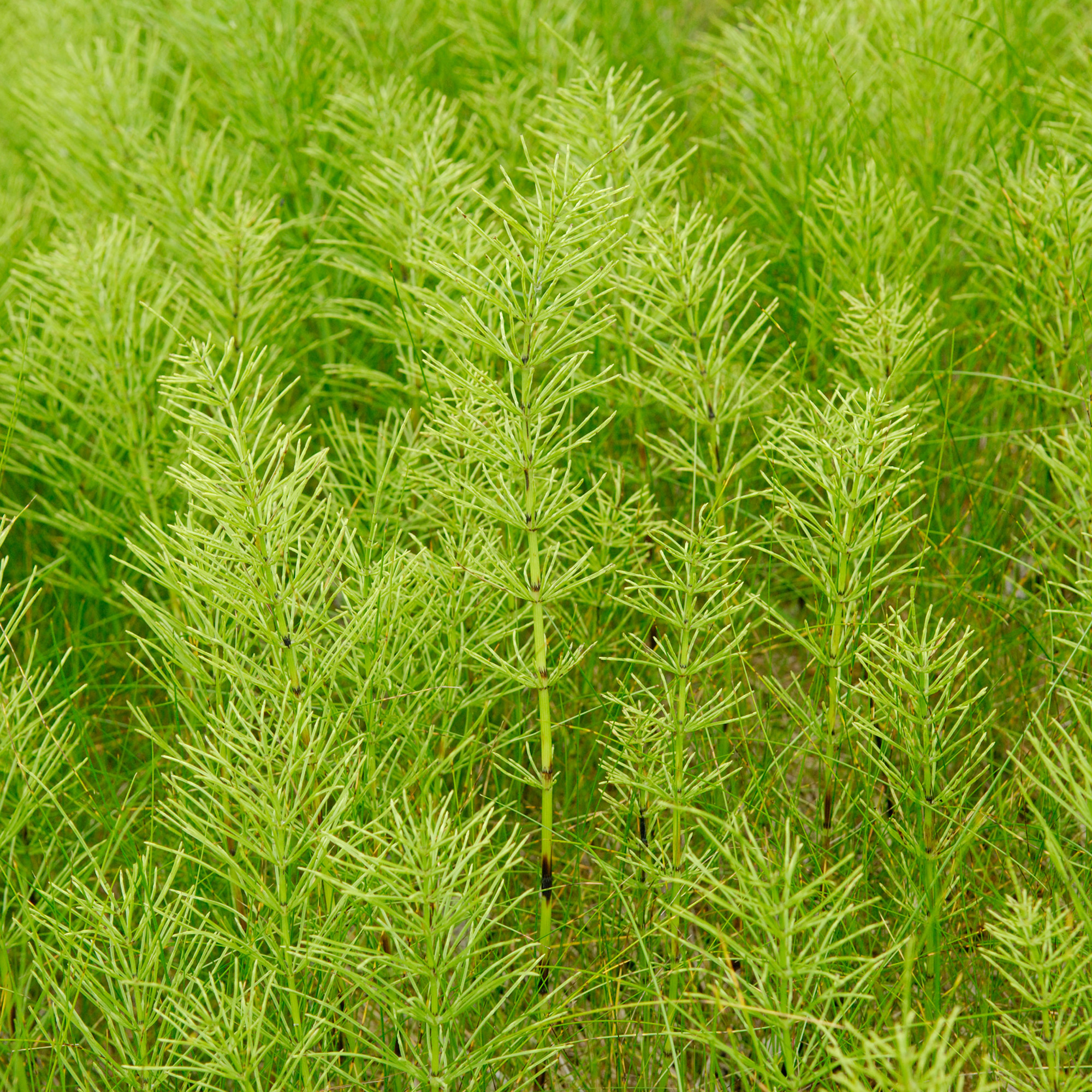
How to identify horsetail weeds
Before starting out it's best to double check you are dealing with horsetail weeds. Depending on the time of year, horsetail weed looks different. In spring, it has brown stems with cone-like tops. Then, in summer, these develop into tall green plants – of around 60-70 cm high – with frondy, fir-like leaves.
If you're still stuck as to whether you have horsetail, several professional weed removal companies offer identification services. Environmental Controls offers a free ID service.
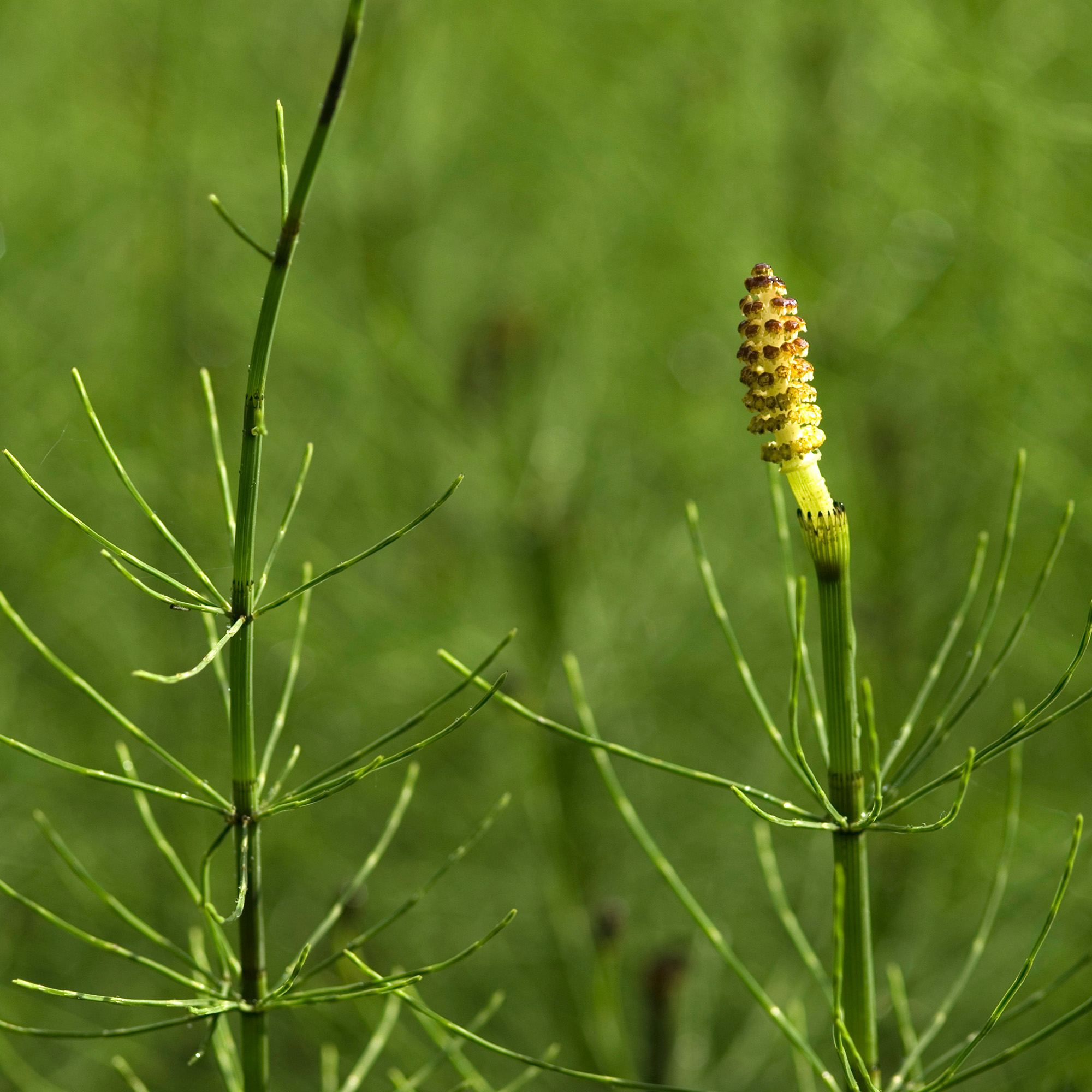
How to get rid of horsetail weed
There are several different methods you can use to get rid of horsetail weed, and they are at their most effective when used in conjunction with each other.
Sign up to our newsletter for style inspiration, real homes, project and garden advice and shopping know-how
- Focus on the new shoots – these will be easier to pull and can help you keep on top of new growth.
- Use a weed burner – while flame weeding won't completely kill the horsetail weeds, it will help to control their growth, and it's less effort than pulling the weeds by hand.
- Dig out what you can – while difficult, and you'll struggle to completely dig out every part of this deep-growing weed, digging out plants can help deal with large clumps.
- Damage the plant before using weedkiller – while solely applying weedkiller doesn't work, breaking the leaves can help the weedkiller penetrate, making it more effective.
- Mow regularly – if horsetail weed is in your lawn, mowing your lawn regularly is the best way to keep it at bay. It's also worth adding the task to your weekly lawn care calendar and investing in a good lawn mower if you haven’t already.
- Cover with strong weed-resistant matting and mulch – this restricts the light and can stop the plant from growing in areas where the matting is used.
You will need
Do weed killers work to get rid of horsetail weed?
No, weed killers don't work to get rid of horsetail weed.
'Horsetail weed has an impervious coating on the stems and foliage. This makes it resistant to all types of weedkiller, including the strongest one, Glyphosate. In short, weedkiller won't really work,' explains Helena Jones, Head of Commercial at Hedges Direct.
You can make weed killer more effective by damaging the horsetail weed's leaves and stems before applying weed killer, but it has mixed reports of success when trying to get rid of horsetail weed, especially with more established plants.
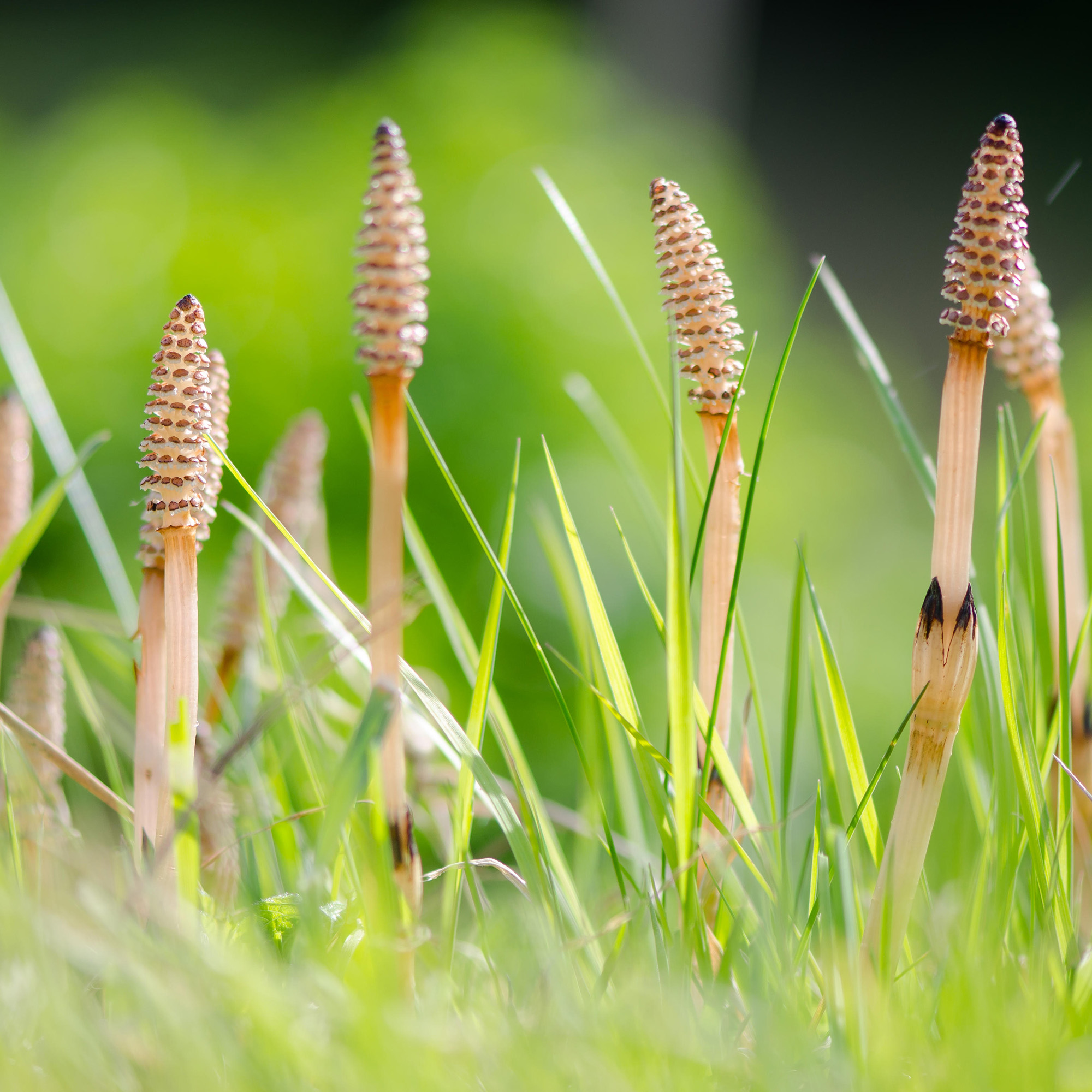
Why is it so difficult to pull horsetail weed out of the garden?
Horsetail weed has a fast-growing underground rhizome system, meaning it grows with the same vigour as Japanese knotweed and can be as difficult to remove
'Horsetail weed has got an incredibly deep root system, we're talking 6-7 feet deep and spread out over a massive area, really extensive, which makes digging it out really difficult,' says Helen. 'We thought we'd dug ours out when we were re-turfing, as we couldn't see a single sign of it, but it's back again. It can re-grow from the tiniest piece of root left in and spreads very quickly.'
How do I stop horsetail weed reproducing?
'Horsetail weed has a really efficient way of seeding via spores – like propagating a fern. In spring, it throws up long, brownish stems with slim cones on top - they are what release the spores, so you look to remove them as they come up to stop it from spreading,' says Helen.
Cut these stems before the cones appear to prevent the release of spores – especially if you are trying to get rid of weeds in a lawn.
Once you have cut the stems, dispose of them sensibly, ideally by burning. Never put horsetail in a compost heap – this will only cause it to spread.
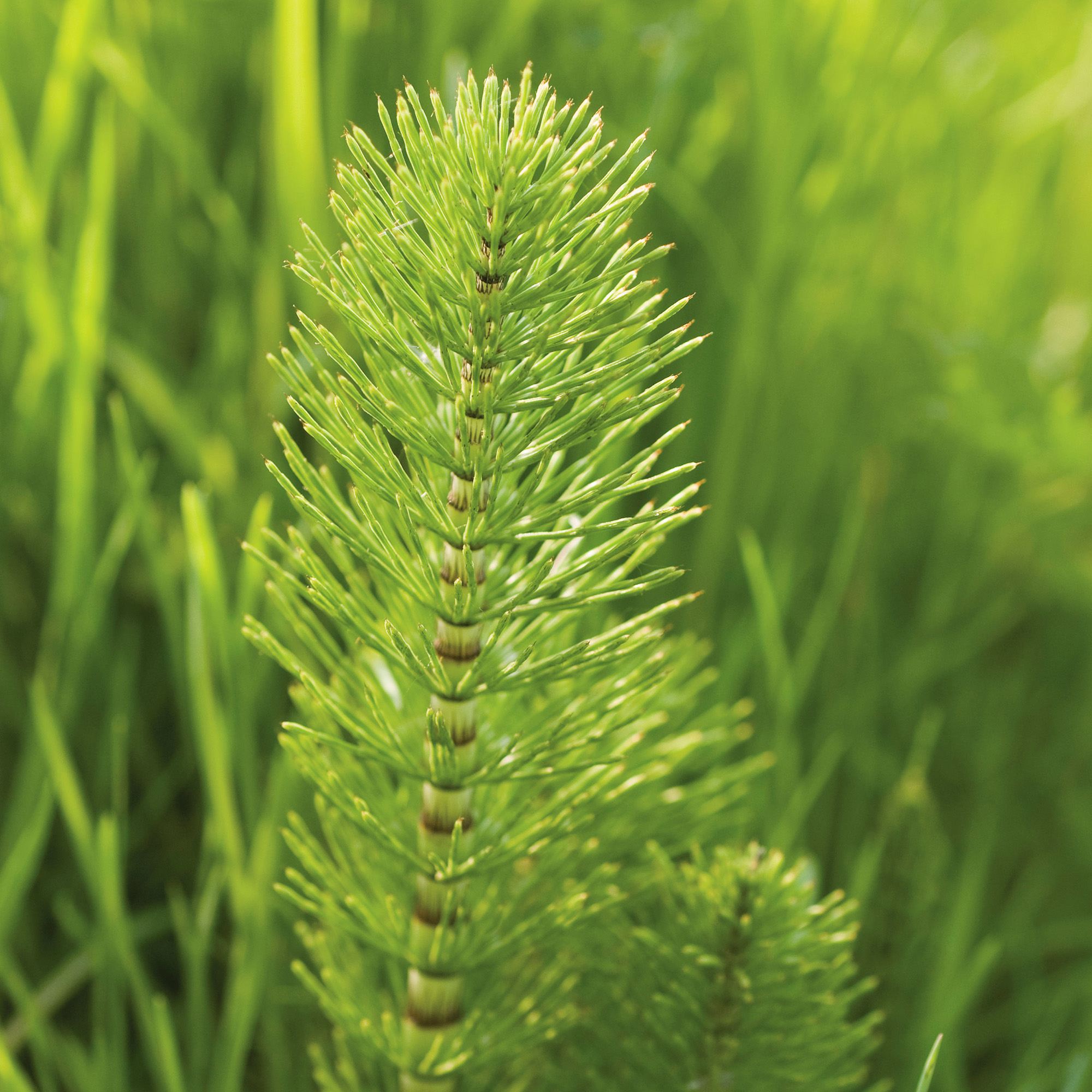
When to get professional advice
Horsetail weed is one of the weeds that might require professional removal – especially if you have a large infestation.
However, it is an involved process, as horsetail weed removal specialists Marestails UK explains: 'The initial year includes 3 intensive treatments to make the greatest impact quickly. Following this, 1-2 maintenance treatments over the next 5 years help ensure lasting control.'
Take an alternative approach
If you're struggling to get rid of horsetail weed, there is another way to approach it, as Helen discovered.
'Horsetail weed is not actually unattractive with its bright green foliage, and it can have benefits to your wildlife garden ideas, providing food and habitat for some native invertebrates. From my perspective, I admire it. It has survived all that time and still thrives today - pretty astounding, one of nature's perfections,' says Helen.
'I tend to pull it out as I see it to manage it, and it dies back in autumn/winter anyway. Many people tend to 'live with it' now if it's sprouting in just a few places in the garden. If it's becoming a real nuisance and taking over, it's time to call in the professionals.
Would you be tempted to just live with it?

Holly is one of Ideal Home’s content editors. Starting her career in 2018 as a feature writer and sub-editor for Period Living magazine, she has continued this role also adding regular features for Country Homes & Interiors and the Ideal Home website to her roster. Holly has a passion for traditional and country-inspired interiors – especially kitchen design – and is happiest when exploring the countryside and hills of the Lake District. A keen gardener, she is a strong believer that you can never have too many houseplants.
You must confirm your public display name before commenting
Please logout and then login again, you will then be prompted to enter your display name.
